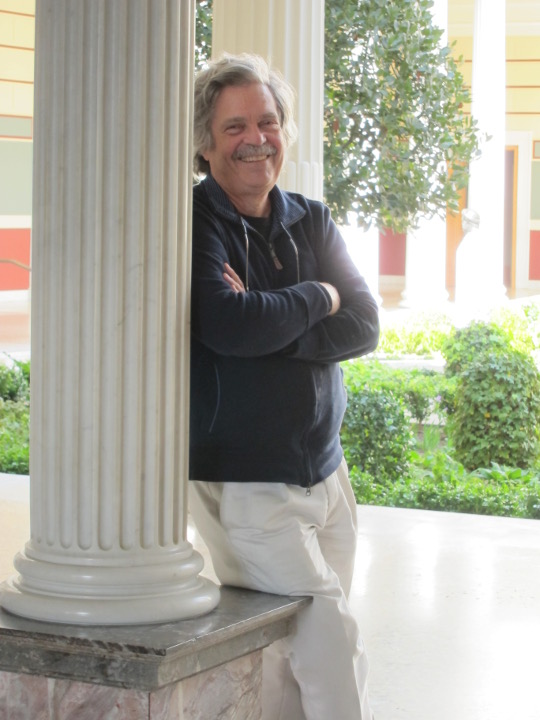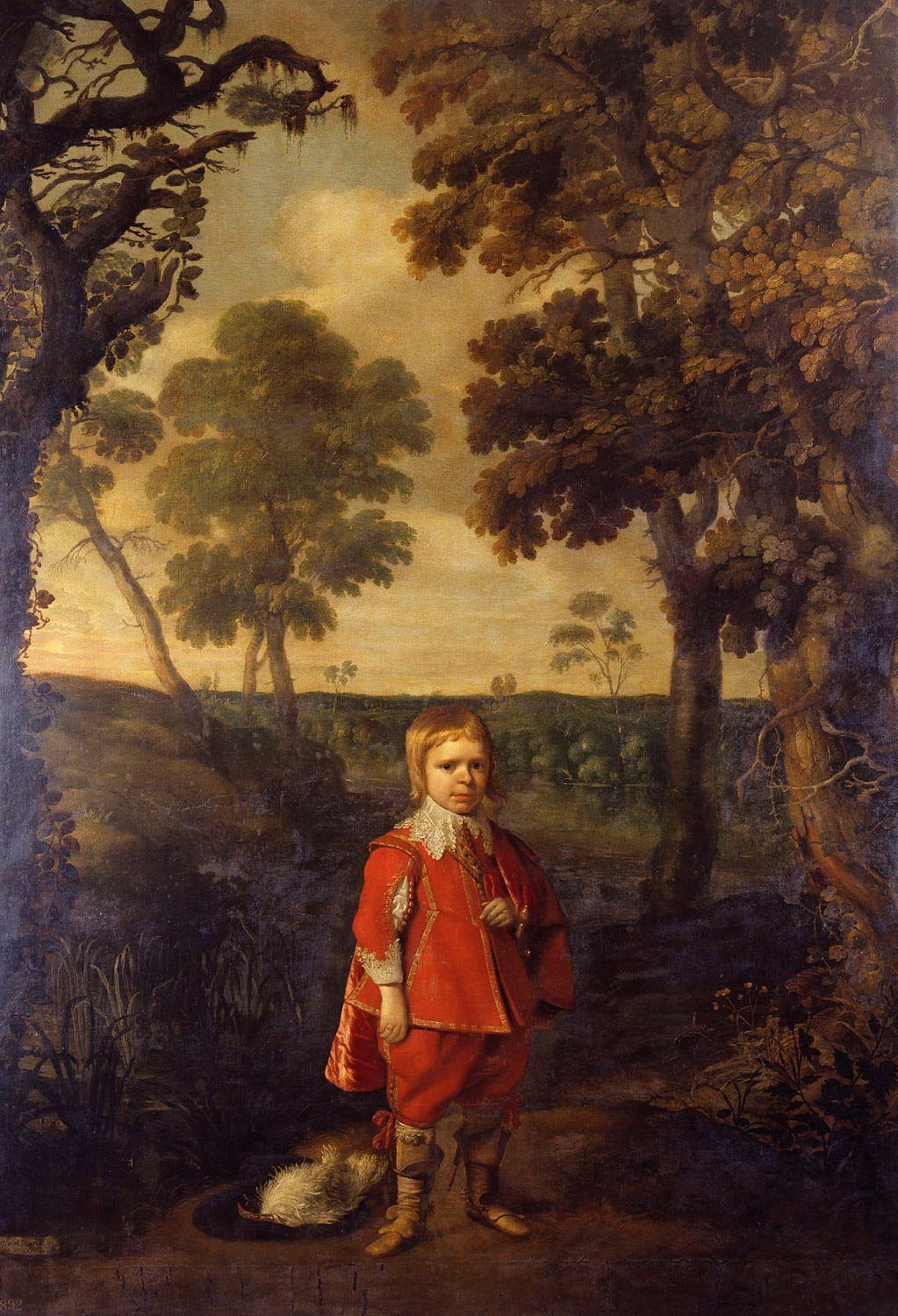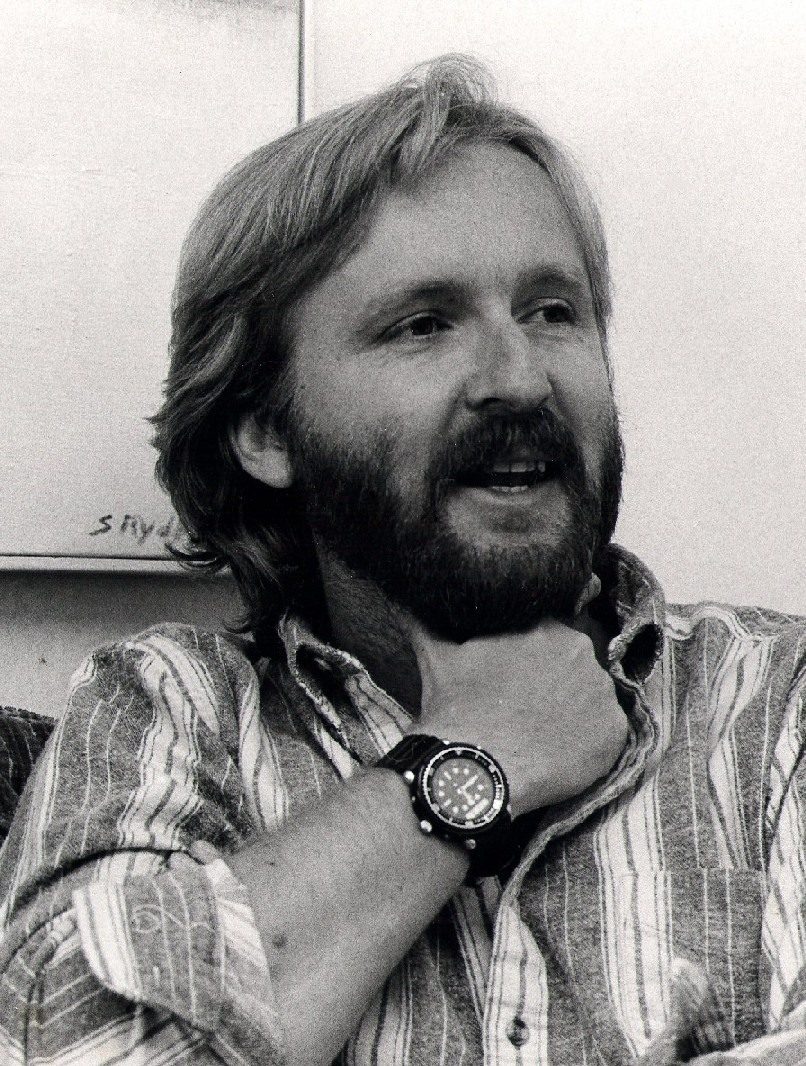|
David A. Smith (computer Scientist)
David Alan Smith (born 1957 in Camp Lejeune, North Carolina) is an American computer scientist, entrepreneur, and CTO of the Croquet Corporation. He has focused on interactive 3D and using 3D as a basis for new user environments and entertainment for over twenty years. Early career He began his programming life as a corporate analyst at Thermo Electron Corporation, where he worked to develop an enterprise-wide multi-user multidimensional hierarchical spreadsheet program in the APL programming language. In 1982, Smith went to work for Richard Greenblatt and Lucia Vaina as a programmer for Softrobotics, an affiliate of Lisp Machines, Inc. where he worked to develop an expert system for the diagnosis of brain damage using an Apple II as the front end to a Lisp Machine. In 1984, he moved back to the Special Projects Laboratory at Thermo Electron to work for Stelianos Pezaris (Sutherland-Pezaris headmount and Pezaris Array Multiplier), where he designed a process control application a ... [...More Info...] [...Related Items...] OR: [Wikipedia] [Google] [Baidu] |
Marine Corps Base Camp Lejeune
Marine Corps Base Camp Lejeune () is a United States Armed Forces, United States military training facility in Jacksonville, North Carolina. Its of beaches make the base a major area for Amphibious warfare, amphibious assault training, and its location between two deep-water ports (Wilmington, North Carolina, Wilmington and Morehead City, North Carolina, Morehead City) allows for fast deployments. The main base is supplemented by six satellite facilities: Marine Corps Air Station New River, Camp Geiger, Stone Bay, Courthouse Bay, Camp Gilbert H. Johnson, Camp Johnson, and the Marine Corps Outlying Field Camp Davis, Greater Sandy Run Training Area. The Marine Corps port facility is in Beaufort, North Carolina, Beaufort, at the southern tip of Radio Island (between the NC State Port in Morehead City, and the marine science laboratories on Pivers Island in Beaufort). It is occupied only during military port operations. Facilities Camp Lejeune encompasses 156,000 acres, with 18 kilo ... [...More Info...] [...Related Items...] OR: [Wikipedia] [Google] [Baidu] |
The Colony (video Game)
''The Colony'' is a first-person shooter developed by David Alan Smith. It was published by Mindscape. The 1988 Macintosh release came in two versions, one in color and one with black-and-white graphics. The MS-DOS version, released the same year, was available in black-and-white only. The 1990 Amiga version was in color. Previous first-person perspective games of the era used precomputed views, such as '' The Sentinel'', or fixed-perspective graphics, such as '' Phantom Slayer''. ''The Colony'' was one of the first games of its kind to let the player move freely while rendering graphics in real time. It was also one of the first 3D games to let the player drive a vehicle. Plot The player takes the role of a marshal responding to a distress call from a research colony. After crash-landing on the planet, the marshal must repair their damaged ship, investigate the colony, and eventually discover and stop an alien race plotting to take over the universe. Development Instead of ... [...More Info...] [...Related Items...] OR: [Wikipedia] [Google] [Baidu] |
Andreas Raab
Squeak is an object-oriented, class-based, and reflective programming language. It was derived from Smalltalk-80 by a group that included some of Smalltalk-80's original developers, initially at Apple Computer, then at Walt Disney Imagineering, where it was intended for use in internal Disney projects. The group would later go on to be supported by HP labs, SAP, and most recently, Y Combinator. Squeak runs on a virtual machine (VM), allowing for a high degree of portability. The Squeak system includes code for generating a new version of the VM on which it runs, along with a VM simulator written in Squeak. Developers Dan Ingalls, an important contributor to the Squeak project, wrote the paper upon which Squeak is built, and constructed the architecture for five generations of the Smalltalk language. Alan Kay is an important contributor to the Squeak project, and Squeak incorporates many elements of his proposed Dynabook concept. User interface frameworks Squeak includes four ... [...More Info...] [...Related Items...] OR: [Wikipedia] [Google] [Baidu] |
Julian Lombardi
Julian Lombardi (born November 11, 1956) is an American inventor, author, educator, and computer scientist known for his work with socio-computational systems, scalable virtual world technologies, and in the design and deployment of deeply collaborative virtual learning environments. Biography Lombardi was born to a concert pianist and an Italian actress living in New York City. His family soon moved back to Rome, Italy, where he lived until the age of six. He went on to attend Buckley Country Day School and public schools in Great Neck, New York and elsewhere on Long Island. In 1974 Lombardi began his undergraduate studies at Dowling College and graduated cum laude in the biology major and physics minor in 1977. He attended graduate school at Clemson University, where he received his MA in 1980 and was granted a PhD in zoology in 1983. Upon graduation, Lombardi accepted a postdoctoral appointment and lectureship in the biological sciences at the University of North Carol ... [...More Info...] [...Related Items...] OR: [Wikipedia] [Google] [Baidu] |
Alan Kay
Alan Curtis Kay (born May 17, 1940) published by the Association for Computing Machinery 2012 is an American computer scientist best known for his pioneering work on object-oriented programming and windowing graphical user interface (GUI) design. At Xerox PARC he led the design and development of the first modern windowed computer desktop interface. There he also led the development of the influential object-oriented programming language Smalltalk, both personally designing most of the early versions of the language and coining the term "object-oriented." He has been elected a Fellow of the American Academy of Arts and Sciences, the National Academy of Engineering, and the Royal Society of Arts. He received the Turing award in 2003. Kay is also a former professional jazz guitarist, composer, and theatrical designer. He also is an amateur classical pipe organist. Early life and work In an interview on education in America with the Davis Group Ltd., Kay said: Ori ... [...More Info...] [...Related Items...] OR: [Wikipedia] [Google] [Baidu] |
Croquet Project
Croquet OS is a web-based operating system for creating three-dimensional apps with multi-user functionalities that run simultaneously on any device. Croquet can be used for communication, online gaming environments such as massively multiplayer online role-playing games (MMORPGs), 3D wikis, virtual learning and problem solving environments, privately maintained or interconnected multi-user virtual environments, and more advanced functions such as highly scalable collaborative data visualization, resource sharing, and synchronous computation among multiple users. History The original authors of Croquet opened a commercial company named Qwaq which was later renamed to Teleplace. That technology was later sold back to a group of the original Croquet developers and became Immersive Terf. Croquet is the confluence of several independent lines of work that were being carried out by its six principal architects, Alan Kay, David A. Smith. David P. Reed, Andreas Raab, Julian L ... [...More Info...] [...Related Items...] OR: [Wikipedia] [Google] [Baidu] |
Michael Crichton
John Michael Crichton (; October 23, 1942 – November 4, 2008) was an American author and filmmaker. His books have sold over 200 million copies worldwide, and over a dozen have been adapted into films. His literary works heavily feature technology and are usually within the science fiction, techno-thriller, and medical fiction genres. His novels often explore technology and failures of human interaction with it, especially resulting in catastrophes with biotechnology. Many of his novels have medical or scientific underpinnings, reflecting his medical training and scientific background. Crichton received an M.D. from Harvard Medical School in 1969 but did not practice medicine, choosing to focus on his writing instead. Initially writing under a pseudonym, he eventually wrote 26 novels, including: ''The Andromeda Strain'' (1969), ''The Terminal Man'' (1972), '' The Great Train Robbery'' (1975), '' Congo'' (1980), ''Sphere'' (1987), '' Jurassic Park'' (1990), '' Rising Sun'' (19 ... [...More Info...] [...Related Items...] OR: [Wikipedia] [Google] [Baidu] |
Tom Clancy
Thomas Leo Clancy Jr. (April 12, 1947 – October 1, 2013) was an American novelist. He is best known for his technically detailed espionage and military science, military-science storylines set during and after the Cold War. Seventeen of his novels have been bestsellers and more than 100 million copies of his books have been sold. His name was also used on movie scripts written by ghostwriters, nonfiction books on military subjects occasionally with co-authors, and video games. He was a part-owner of his hometown Major League Baseball team, the Baltimore Orioles of the American League, and vice-chairman of their community activities and public affairs committees. Originally an insurance agent, his literary career began in 1984 when he sold his first military thriller novel ''The Hunt for Red October'' for $5,000 published by the small academic Naval Institute Press of Annapolis, Maryland. His works ''The Hunt for Red October'' (1984), ''Patriot Games'' (1987), ''Clear and ... [...More Info...] [...Related Items...] OR: [Wikipedia] [Google] [Baidu] |
Personal Computers
A personal computer (PC) is a multi-purpose microcomputer whose size, capabilities, and price make it feasible for individual use. Personal computers are intended to be operated directly by an end user, rather than by a computer expert or technician. Unlike large, costly minicomputers and mainframes, time-sharing by many people at the same time is not used with personal computers. Primarily in the late 1970s and 1980s, the term home computer was also used. Institutional or corporate computer owners in the 1960s had to write their own programs to do any useful work with the machines. While personal computer users may develop their own applications, usually these systems run commercial software, free-of-charge software ("freeware"), which is most often proprietary, or free and open-source software, which is provided in "ready-to-run", or binary, form. Software for personal computers is typically developed and distributed independently from the hardware or operating system manufa ... [...More Info...] [...Related Items...] OR: [Wikipedia] [Google] [Baidu] |
The Abyss
''The Abyss'' is a 1989 American science fiction film written and directed by James Cameron and starring Ed Harris, Mary Elizabeth Mastrantonio, and Michael Biehn. When an American submarine sinks in the Caribbean, a US search and recovery team works with an oil platform crew, racing against Soviet vessels to recover the boat. Deep in the ocean, they encounter something unexpected. The film was released on August 9, 1989, receiving generally positive reviews and grossed $89.8 million. It won the Academy Award for Best Visual Effects and was nominated for three more Academy Awards. Plot In January 1994, the U.S. USS ''Montana'' has an encounter with an unidentified submerged object and sinks near the Cayman Trough. With Soviet ships moving in to try to salvage the sub and a tropical cyclone, hurricane moving over the area, the U.S. government sends a United States Navy SEALs, SEAL team to ''Deep Core'', a privately owned experimental underwater drilling platform near the Cayman ... [...More Info...] [...Related Items...] OR: [Wikipedia] [Google] [Baidu] |
James Cameron
James Francis Cameron (born August 16, 1954) is a Canadian filmmaker. A major figure in the post-New Hollywood era, he is considered one of the industry's most innovative filmmakers, regularly pushing the boundaries of cinematic capability with his use of novel technologies. He first gained recognition for writing and directing '' The Terminator'' (1984) and found further success with ''Aliens'' (1986), ''The Abyss'' (1989), '' Terminator 2: Judgment Day'' (1991), and the action comedy ''True Lies'' (1994). He wrote and directed ''Titanic'' (1997) and ''Avatar'' (2009), with ''Titanic'' earning him Academy Awards for Best Picture, Best Director and Best Film Editing. A recipient of various other industry accolades, two of his films have been selected for preservation in the National Film Registry by the Library of Congress. Cameron co-founded the production companies Lightstorm Entertainment, Digital Domain, and Earthship Productions. In addition to filmmaking, he is a Na ... [...More Info...] [...Related Items...] OR: [Wikipedia] [Google] [Baidu] |
Virtual Camera System
In 3D video games, a virtual camera system aims at controlling a camera or a set of cameras to display a view of a 3D virtual world. Camera systems are used in video games where their purpose is to show the action at the best possible angle; more generally, they are used in 3D virtual worlds when a third-person view is required. As opposed to filmmakers, virtual camera system creators have to deal with a world that is interactive and unpredictable. It is not possible to know where the player character is going to be in the next few seconds; therefore, it is not possible to plan the shots as a film maker would do. To solve this issue, the system relies on certain rules or artificial intelligence to select the most appropriate shots. There are mainly three types of camera systems. In ''fixed camera systems'', the camera does not move at all and the system displays the player's character in a succession of still shots. ''Tracking cameras'', on the other hand, follow the characte ... [...More Info...] [...Related Items...] OR: [Wikipedia] [Google] [Baidu] |







